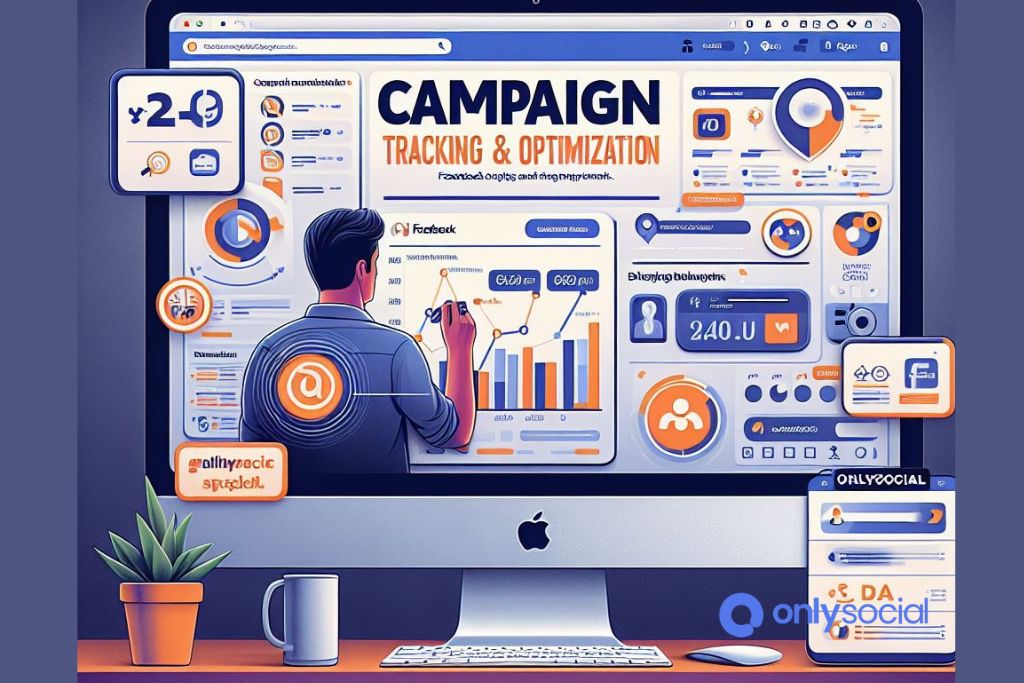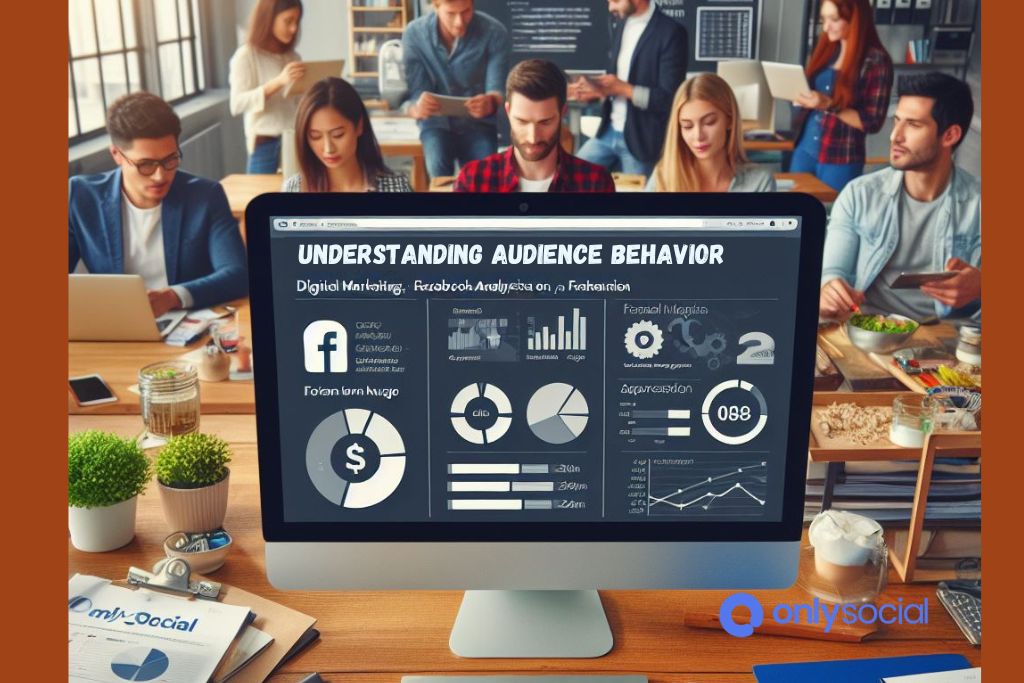Skyrocket Your Social Media Results in 2025: 5 Proven UTM Parameter Uses for Ultimate Success

In today’s digital age, the landscape of social media marketing evolves at an unprecedented pace. As businesses and marketers strive to stay ahead of the curve, the key to unlocking phenomenal growth on social media platforms lies in leveraging the right tools and strategies. The mission to skyrocket your social media results in 2025 is not just about posting frequently or having visually appealing content; it’s about strategically analyzing and optimizing your efforts to ensure maximum engagement and conversion. Among the arsenal of tools available to achieve this, UTM parameters stand out as invaluable for anyone looking to significantly enhance their social media marketing effectiveness.
Table of Contents
- 1 Enhancing Campaign Tracking and Optimization
- 2 Refining Your Content Strategy
- 3 Understanding Audience Behavior and Preferences
- 4 Competitor Analysis and Benchmarking
- 5 Monitoring and Adjusting Marketing Strategies
- 6 Implementing UTM Parameters Successfully
- 7 BONUS
- 7.1 Frequently Asked Questions
- 7.1.1 What are UTM Parameters?
- 7.1.2 Why are UTM Parameters Important for Social Media Success?
- 7.1.3 How Can I Create UTM Parameters?
- 7.1.4 Can UTM Parameters Help in A/B Testing on Social Media?
- 7.1.5 Is There a Best Practice for Naming UTM Parameters?
- 7.1.6 How Often Should I Review My UTM Parameter Data?
- 7.1.7 Can Too Many UTM Parameters Skew My Data?
- 7.1.8 Do UTM Parameters Work on All Social Media Platforms?
- 7.1.9 What’s the Difference Between utm_source and utm_medium?
- 7.1.10 How Can I Organize My UTM Parameter Data for Easier Analysis?
- 7.1 Frequently Asked Questions
The Increasing Importance of Analytics in Social Media
With millions of posts made every minute, cutting through the noise to reach your target audience has become more challenging than ever. This is where analytics comes into play. Understanding the performance of your social media campaigns is crucial for refining strategies, allocating budgets effectively, and ultimately, skyrocketing your social media results. Analytics provide the insights needed to make data-driven decisions, tailor content to audience preferences, and track ROI on every dollar spent.
Harnessing UTM Parameters for Precision Tracking
UTM parameters are the cornerstone of effective social media analytics. These short text codes added to URLs help you track the effectiveness of your online marketing campaigns across traffic sources and publishing media. By employing UTM parameters, businesses can gain in-depth insights into where their visitors are coming from, what content drives engagement, and which campaigns are delivering the best returns. This granular tracking capability is indispensable for anyone looking to skyrocket their social media results by making every campaign more targeted and every piece of content more resonant with their audience.
Why UTM Parameters Are Your Best Ally
In the quest to skyrocket your social media results, understanding the journey your audience takes to reach you is pivotal. UTM parameters enable this by offering detailed analytics about user interactions with your social media content. Whether it’s identifying the most effective platforms, understanding the types of content that engage your audience, or measuring the impacts of specific campaigns, UTM parameters offer the clarity needed to make informed marketing decisions.
Enhancing Campaign Tracking and Optimization
To skyrocket your social media results, a meticulous approach to campaign tracking and optimization is essential. UTM parameters offer a precision toolset for dissecting the performance of your social media efforts, enabling you to iterate and refine strategies for maximum impact.
Streamlining Social Media Marketing with UTM Parameters
Integrating UTM parameters into your social media campaigns is a game-changer for marketers aiming to elevate their brand’s digital presence. These parameters allow you to tag your social media links with specific codes that provide detailed insights into the efficacy of your campaigns.
Key Components of UTM Parameters
- Campaign Source (utm_source): Identifies the platform (e.g., Twitter, Facebook) that is directing traffic to your content.
- Campaign Medium (utm_medium): Specifies the medium used to share the link (e.g., social, email).
- Campaign Name (utm_campaign): Notes the specific campaign or promotion that the link is part of.
- Campaign Term (utm_term): (Optional) Used for paid search to identify keywords for the ad.
- Campaign Content (utm_content): (Optional) Differentiates similar content within the same ad or post.
By employing these UTM components, businesses can finely segment their traffic sources, providing invaluable data for refining marketing strategies.
Leveraging Data for Campaign Optimization
UTM parameters generate a wealth of data that, when properly analyzed, can significantly skyrocket your social media results. This data enables marketers to:
- Identify the most effective platforms for engagement and conversion.
- Tailor content strategies to audience preferences gathered from campaign performance.
- Allocate budgets more effectively by investing in high-performing campaigns.
Maximizing ROI through Effective Budget Allocation
Understanding the return on investment (ROI) of your social media activities is vital for effective budget allocation. With UTM parameters, you can trace the direct impact of specific campaigns or strategies on your overall business goals, such as sales conversions, lead acquisition, or engagement metrics.
Detailed Insights Provided by UTM Parameters
| UTM Parameter | Insights Gained |
|---|---|
| utm_source | Most effective platforms for driving traffic. |
| utm_medium | Best performing mediums (e.g., CPC, banner, email). |
| utm_campaign | High-impact campaigns leading to conversions. |
| utm_term | Keywords that are most successful in paid search. |
| utm_content | Content variations that resonate with your audience. |
Leveraging these insights allows marketers to not only justify their social media spend but also shift resources dynamically to activities that are proven to skyrocket your social media results. By evaluating the performance of various strategies in real time, businesses can make data-driven decisions that enhance the ROI of their social media marketing.
To truly skyrocket your social media results, it’s not enough to simply track and collect data. The power lies in the strategic application of these insights to continually refine and optimize every aspect of your social media campaigns. Through the diligent use of UTM parameters, marketers can ensure that their efforts are not just seen but are impactful, driving tangible benefits for their brands in the competitive landscape of 2025.
Refining Your Content Strategy
In the digital era where content is, having a refined content strategy is paramount to skyrocket your social media results. UTM parameters serve as a compass guiding marketers toward content that resonates most with their audience, ensuring that every post, tweet, or share contributes to achieving overarching business objectives.
Leveraging Analytics for Content Optimization
The analytics derived from UTM parameters provide a deep dive into which types of content garner the most engagement and conversion. This data-driven approach empowers marketers to craft strategies that are not just based on instinct but on actionable insights.
Identifying High-Performing Content
- Engagement Analysis: Review metrics such as likes, comments, and shares to identify content types that engage your audience the most.
- Conversion Tracking: Use UTM parameters to track which content pieces lead to conversions, such as sign-ups, downloads, or sales.
This analysis enables marketers to identify winning content formulas and replicate their success in future campaigns.
Tailoring Content to Audience Preferences
Understanding the preferences of your target audience is essential to refine your content strategy. With insights from UTM parameters, marketers can:
- Segment content performance by demographics or interests.
- Adjust content formats (videos, blogs, infographics) based on user engagement.
- Optimize posting schedules to times when your audience is most active online.
Utilizing A/B Testing for Content Engagement
A/B testing, supported by precise tracking through UTM parameters, is a critical strategy for optimizing content engagement. This method involves comparing two variants of content to see which one performs better on social media platforms.
Conducting Effective A/B Testing
- Define Objectives: Clearly identify what you aim to improve with the A/B test (e.g., click-through rates, engagement levels).
- Create Variations: Develop two versions of your content with one key difference (e.g., headline, image, call-to-action).
- Implement UTM Parameters: Tag each content variant with distinct UTM codes to track their performance accurately.
- Analyze Results: Use analytics to determine which version achieved better results toward meeting your objectives.
| Content Variant | Metric | Results |
|---|---|---|
| A (Original) | CTR | X% |
| B (Modified) | CTR | Y% |
Optimizing Strategy Based on Test Outcomes
- Leverage Winning Elements: Incorporate the successful aspects of the winning variant into future content.
- Iterate and Test Further: Continue testing other elements to refine and enhance your content strategy continually.
By systematically testing and adjusting your content based on solid data from UTM parameters, your social media campaigns become increasingly effective. This focused approach to content strategy is crucial for those looking to skyrocket their social media results, turning average campaigns into outstanding successes with resonant, engaging, and conversion-driven content that captures the essence of your brand and speaks directly to your target audience’s preferences and needs.
Understanding Audience Behavior and Preferences
To skyrocket your social media results, a deep understanding of audience behavior and preferences is paramount. By leveraging the powerful insights provided by UTM parameters, marketers can unlock the secrets to what their audience truly desires, when they are most active, and how they interact with content across different social media platforms.
Analyzing Audience Interactions with UTM Parameters
UTM parameters allow for the meticulous tracking of audience interactions, providing a clear picture of how different segments of your audience engage with your content.
Tracking Engagement Across Platforms
- Social Platform Preference: Identify which platforms generate the most traffic and engagement for your content.
- Content Type Performance: Determine which types of content (e.g., videos, blogs, polls) resonate most with your audience.
This level of insight assists in tailoring your social media strategy to align with the preferences of your target audience, significantly contributing to skyrocket your social media results.
Segmenting Your Audience for Targeted Strategies
The ability to segment your audience based on their behavior and preferences is a critical advantage that UTM parameters offer. Employing these insights ensures that your content strategy is not one-size-fits-all but is carefully adjusted to meet the nuanced needs of different audience segments.
Examples of Audience Segmentation Using UTM Data
| UTM Parameter | Audience Insight | Strategic Application |
|---|---|---|
| utm_source | Most engaged social media platform | Focus more resources on this platform |
| utm_campaign | Top-performing campaigns | Increase investment in similar campaigns |
| utm_content | Preferred content formats | Produce more of the favored content types |
Personalizing Content to Boost Engagement
- Utilize demographic and psychographic data gathered through UTM tracking to create personalized content that speaks directly to the interests and needs of different audience segments.
- Tailor messaging and calls-to-action (CTAs) based on insights into what motivates different segments to engage or convert.
Leveraging UTM Insights for Real-time Adjustments
One of the most powerful applications of UTM parameters is the ability to make real-time adjustments to your social media strategy based on current audience behavior and preferences.
Responding to Audience Behavior Trends
- Monitor UTM Data Frequently: Keep a close eye on UTM tracking data to identify emerging trends in audience behavior.
- Adjust Content Strategy Accordingly: Quickly pivot your content strategy to leverage these insights, ensuring your social media efforts are always aligned with what your audience wants now.
By proactively understanding and responding to the nuances of audience behavior and preferences, marketers can ensure that their efforts to skyrocket social media results are built on a foundation of data-driven insights. This approach not only enhances the relevance of your content but also increases the efficiency of your social media marketing, leading to better engagement, higher conversion rates, and ultimately, more significant success in achieving your business objectives.
Competitor Analysis and Benchmarking
In the quest to skyrocket your social media results, understanding the competitive landscape is crucial. Through strategic competitor analysis and benchmarking, using UTM parameters can provide insights into how competing brands’ social media strategies perform, offering valuable lessons and strategies for outpacing them.
Implementing UTM Parameters for Competitor Tracking
Despite direct access to competitors’ analytics being unavailable, indirect methods can be utilized to gauge their performance through public data and comparative analysis.
Strategies for Competitor Benchmarking
- Analyze Public Engagement Data: Review competitors’ social media profiles for public metrics, such as likes, shares, and comments.
- Use Listening Tools: Employ social listening tools to monitor mentions of competitors and gauge the sentiment and volume compared to your brand.
While direct UTM tracking on competitors’ links isn’t possible, these methods can offer a ballpark understanding of their strategies’ effectiveness.
Utilizing Benchmarking Data to Refine Your Strategy
After gathering and analyzing competitor data, the next step is to benchmark your social media performance against these insights, identifying areas for strategic improvement.
Key Areas for Benchmarking Success
| Area of Comparison | Purpose of Benchmarking |
|---|---|
| Engagement Rates | Gauge content effectiveness |
| Posting Frequency | Identify ideal publishing cadence |
| Content Types | Understand preferred formats in your niche |
| Campaign Themes | Spot trending topics and campaign ideas |
Strategic Adjustments for Improved Performance
- Content Strategy Overhaul: Utilize insights from benchmarking to revamp your content strategy, focusing on areas where competitors are excelling.
- Innovation and Differentiation: Identify gaps in competitors’ strategies to introduce unique approaches, setting your brand apart.
Learning from Competitors’ Successes and Mistakes
Careful analysis of competitors’ social media efforts can reveal much about what works and what doesn’t in your industry niche.
Actionable Insights from Competitor Analysis
- Adopt Proven Tactics: Integrate successful strategies observed in competitors’ campaigns into your own social media plans.
- Avoid Common Pitfalls: Learn from competitors’ visible mistakes or missed opportunities to refine your approach, avoiding similar setbacks.
By continuously monitoring and learning from the competitive realm, businesses can adapt and evolve their strategies more effectively. This proactive approach ensures you’re not just keeping pace but setting the stage to skyrocket your social media results through informed, agile marketing strategies. Competitor analysis and benchmarking are not about imitation but about strategic innovation and positioning your brand as a leader in the digital conversation, captivating your audience in ways that your competitors haven’t yet imagined.
Monitoring and Adjusting Marketing Strategies
To skyrocket your social media results, it’s essential to not only implement but also continuously monitor and adjust your marketing strategies. The digital landscape is perpetually evolving, and so are the preferences and behaviors of your audience. By leveraging the insights from your analytics, particularly those supplied by UTM, you can maintain a dynamic approach to your social media efforts that adapts to trends, feedback, and performance metrics in real-time.
Setting Up for Effective Monitoring
Effective monitoring hinges on the precise setup of tracking mechanisms and clear definitions of success metrics.
Establishing Key Performance Indicators (KPIs)
- Engagement Metrics: Likes, shares, comments, and overall interaction rates.
- Conversion Metrics: Click-through rates (CTR), downloads, sign-ups, and sales generated.
Having these KPIs in place ensures that you have a benchmark for measuring the success of your efforts and identifying areas for improvement.
Analyzing Data for Insightful Adjustments
With your KPIs and tracking in place, it’s crucial to regularly analyze this data to understand the impact of your strategies.
Utilizing UTM Parameters for Granular Insights
UTM parameters offer detailed information on which sources, mediums, and campaigns are most effective in achieving your KPIs. By closely examining this data, you can pinpoint exactly what’s working and what isn’t.
Making Data-Driven Adjustments
- Content Adjustments: Alter your content strategy based on what types of posts yield the highest engagement and conversion rates.
- Campaign Focus: Redirect your efforts and budget towards platforms and campaigns that show the best performance according to your KPIs.
The Role of A/B Testing in Strategy Adjustment
A/B testing remains a cornerstone technique in refining social media marketing strategies, allowing for data-backed decisions.
Implementing Continuous A/B Testing
| Test Aspect | Variant A | Variant B | Outcome Measure |
|---|---|---|---|
| Posting Time | Morning | Evening | Engagement Rate |
| Content Type | Image-based Post | Video Post | Conversion Rate |
| CTA Placement | Top of Post | Bottom of Post | Click-through Rate (CTR) |
Iterative Improvement Based on Results
Following each A/B test, implement the successful elements into your broader marketing strategy, continuously refining your approach for better engagement and conversion outcomes.
Leveraging Feedback Loops for Real-Time Adjustments
Actively seeking and incorporating audience feedback is crucial. Monitor comments, direct messages, and engagement patterns as direct feedback signals from your audience.
Responding to Real-Time Feedback
- Engage with Your Audience: Use comments and direct communications as a feedback mechanism to adjust your strategies in real time.
- Monitor Engagement Trends: Keep an eye on shifting engagement patterns and be prepared to pivot your content strategy accordingly.
To truly skyrocket your social media results, your marketing strategies must be organic, adapting to new data and feedback with agility. The key lies in not just setting and forgetting your marketing efforts but in nurturing them, treating your strategy as a dynamic entity that evolves alongside your audience’s needs and the digital landscape’s shifts. Through continuous monitoring, analysis, and recalibration of your approach based on accurate insights and real-time feedback, you can ensure that your social media presence is not just competitive but also unparalleled in its engagement and conversion efficacy.
Implementing UTM Parameters Successfully
To skyrocket your social media results, mastering the use of UTM parameters is indispensable. UTM parameters, short for Urchin Tracking Module parameters, are tags you add to the end of a URL. When someone clicks on a URL with UTM parameters, the tags are sent back to your Google Analytics for tracking. Here’s how to implement them successfully:
Understanding UTM Parameters
Before diving into implementation, it’s important to understand what UTM parameters are and why they are critical for tracking the success of your social media campaigns.
Key Types of UTM Parameters
- utm_source: Identifies where the traffic originated from (e.g., Facebook, Twitter).
- utm_medium: Specifies the type of traffic (e.g., social, email, CPC).
- utm_campaign: Names the specific campaign or promotion.
- utm_term: Used for paid search to identify keywords.
- utm_content: Helps to differentiate similar content within the same campaign.
Why UTM Parameters are Essential
- Track Campaign Performance: Measure how specific campaigns perform in terms of driving traffic and conversions.
- Understand Audience Behavior: Gain insights into how different audiences from various sources interact with your content.
- Optimize Marketing Efforts: Use data-driven insights to refine your approach and allocate resources more effectively.
Planning Your UTM Strategy
Implementing UTM parameters starts with a solid plan. Define your campaign goals, decide what you need to track, and standardize your naming conventions.
Developing a UTM Code System
- Be Consistent with Naming Conventions: Consistency is key in avoiding data fragmentation. Decide on lowercase or uppercase usage and stick with it to prevent discrepancies in data reporting.
Deciding What to Track
- Choose the aspects of your campaigns you want to analyze, such as source, medium, or campaign effectiveness.
Creating and Implementing UTM Parameters
Creating UTM parameters for your URLs can appear daunting at first, but using the right tools simplifies the process.
Using UTM Builders
- Google’s Campaign URL Builder: An easy-to-use tool that helps you create URLs with embedded UTM parameters.
- UTM Management Tools: Consider using a UTM management tool for larger campaigns to keep track of your URLs and parameters.
Embedding UTM Parameters in Social Media Campaigns
| Platform | How to Implement |
|---|---|
| Use in ads and page post links | |
| Embed in tweets promoting content | |
| Place in bio links or sponsored post URLs | |
| Include in posts and article promotions |
Analyzing Your Results with UTM Data
Once you start using UTM parameters, analyzing the data collected is crucial to refine your marketing strategies.
Leveraging Google Analytics
- Navigate to Acquisition: Look for campaigns under the Acquisition section in Google Analytics to see how your tagged URLs are performing.
- Evaluate Performance: Assess the success of different sources, mediums, and campaigns based on your predefined goals.
Adjusting Strategies Based on Insights
The final—and arguably most important—step is to use the insights gained from UTM tracking to make informed decisions about future social media campaigns.
Making Data-Driven Decisions
- Spot Successful Campaigns: Allocate more resources to campaigns, sources, or mediums that show promising results.
- Identify Areas for Improvement: Use the data to tweak underperforming campaigns or try new approaches.
By following these structured steps to implement UTM parameters, you’re well-equipped to measure, analyze, and refine your social media marketing efforts more effectively. This strategic approach not only helps in quantifying the success of your campaigns but also plays a critical role in making informed decisions that can significantly skyrocket your social media results.
BONUS
Frequently Asked Questions
What are UTM Parameters?
UTM parameters are text codes that you can append to a URL to track where searchers came from, well as the campaigns that drove them to your webpage. They help in dissecting the efficacy of each link and campaign in detail across various platforms and mediums.
Why are UTM Parameters Important for Social Media Success?
UTM parameters play a critical role in social media marketing by providing detailed insights into the performance of each campaign. They help identify which strategies are working, allowing marketers to tailor their efforts for improved results and a higher return on investment (ROI).
How Can I Create UTM Parameters?
You can easily create UTM parameters using Google’s Campaign URL Builder or other similar tools. These tools allow you to input your website URL, campaign source, medium, name, and other information to generate a URL with embedded UTM codes.
Can UTM Parameters Help in A/B Testing on Social Media?
Absolutely. By creating separate URLs with unique UTM parameters for each version of your campaign, you can track which variations perform better in terms of driving traffic and conversions. This data is invaluable for optimizing your social media strategy.
Is There a Best Practice for Naming UTM Parameters?
Yes, it’s crucial to maintain a consistent naming convention for easy analysis. Use lowercase letters to avoid discrepancies (UTM parameters are case-sensitive). Also, be descriptive yet concise to easily remember and categorize your campaigns.
How Often Should I Review My UTM Parameter Data?
Regularly reviewing your UTM parameter data is key to staying agile in your marketing efforts. Monthly reviews are a good start, but the frequency can increase depending on the volume of your campaigns and the pace at which your industry or targeted audience behaviors change.
Can Too Many UTM Parameters Skew My Data?
Using too many UTM parameters or incorrectly configuring them can lead to data fragmentation and analysis paralysis. Stick to using only the necessary parameters and ensure accuracy and consistency when implementing them to avoid this issue.
Do UTM Parameters Work on All Social Media Platforms?
Yes, UTM parameters can be used on any platform that allows you to post or embed a custom URL. This versatility makes them incredibly powerful tools for cross-platform social media marketing analysis.
What’s the Difference Between utm_source and utm_medium?
The utm_source parameter identifies where the traffic originates from, like Facebook or Twitter, while utm_medium describes the type of link used, such as CPC (cost per click), newsletter, or social media post.
How Can I Organize My UTM Parameter Data for Easier Analysis?
Using a dedicated UTM management tool or a spreadsheet can help keep your UTM data organized. Record each UTM-tagged URL along with its parameters and corresponding campaign details for easier performance review and analysis.
By incorporating these FAQs into your blog, you can help demystify UTM parameters for your readers, providing them with the foundational knowledge needed to leverage these tools in their social media strategies effectively.


